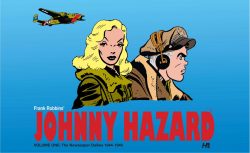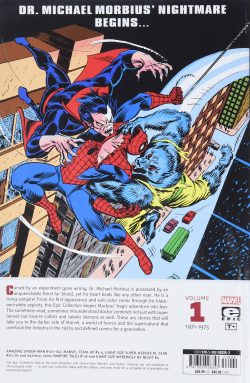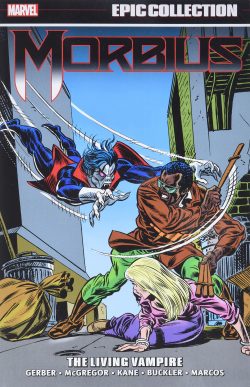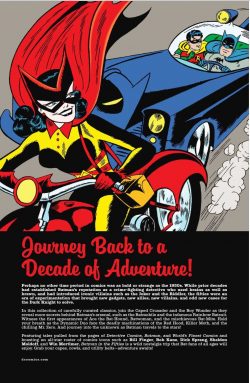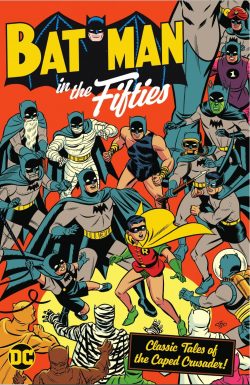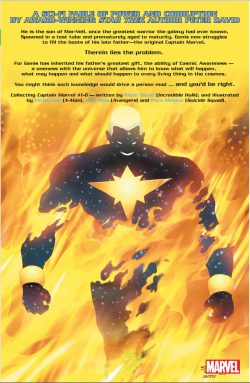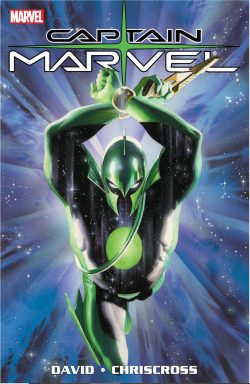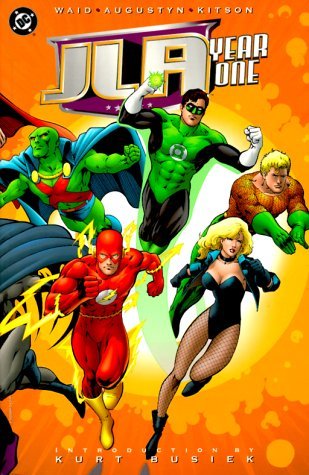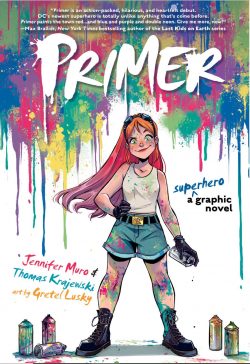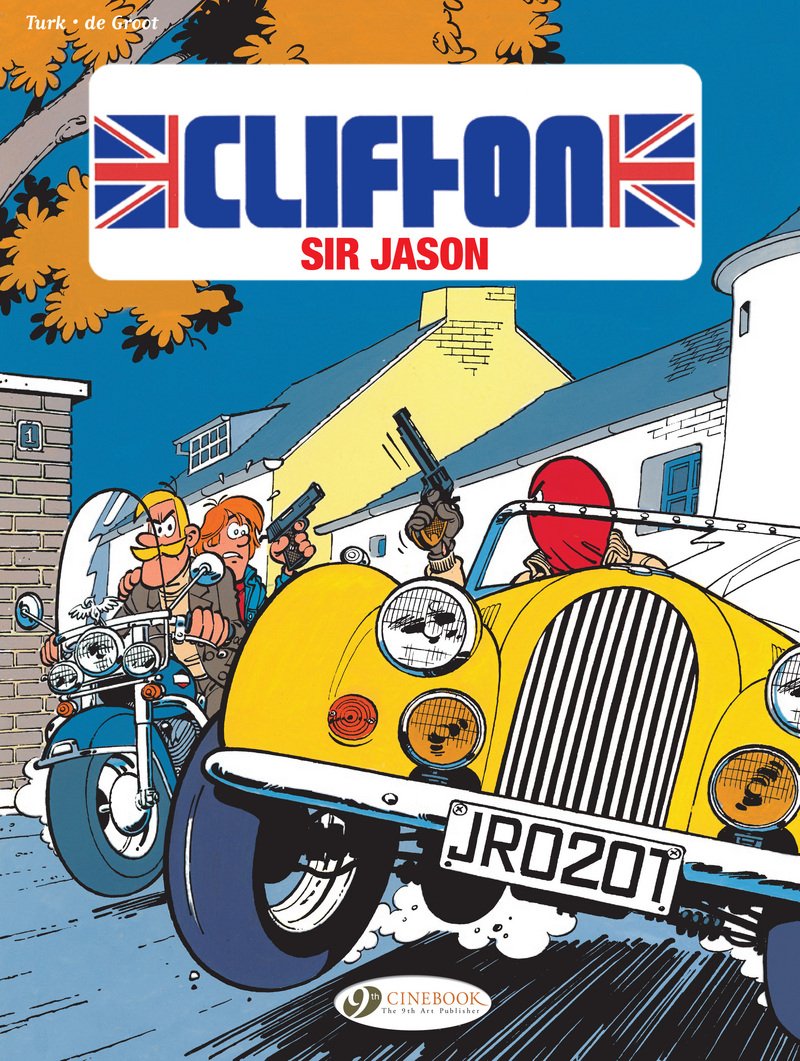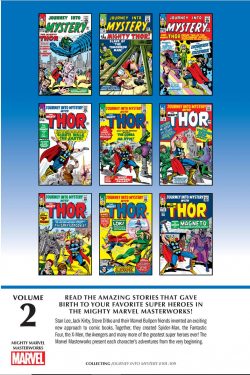
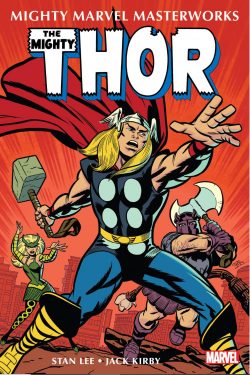
By Stan Lee & Jack Kirby, with Chic Stone, George Roussos, Vince Colletta, Paul Reinman, Don Heck & various (MARVEL)
ISBN: 978-1-3029-3442-2 (PB/Digital edition)
These stories are timeless and have been gathered many times before, but today I’m once again focussing on format. The Mighty Marvel Masterworks line launched with economy in mind: classic tales of Marvel’s key creators and characters re-presented in chronological publishing order. It’s been a staple since the 1990s, but always in lavish, hardback collectors editions. These editions are cheaper, on lower quality paper and – crucially – smaller, about the dimensions of a paperback book. Your eyesight might be failing and your hands too big and shaky, but at 152 x 227mm, they’re perfect for kids. If you opt for the digital editions, that’s no issue at all…
Even more than The Fantastic Four, The Mighty Thor was the arena in which Jack Kirby’s boundless fascination with all things Cosmic was honed and refined through his dazzling graphics and captivating concepts. The King’s plethora of power-packed signature pantheons began in a modest little fantasy/monster title called Journey into Mystery where – in the summer of 1962 – a tried-and-true comicbook concept (feeble mortal transformed into god-like hero) was revived by the rapidly resurgent company who were not yet Marvel Comics: adding a Superman analogue to their growing roster of costumed adventurers.
Cover-dated August 1962, Journey into Mystery #83 saw a bold costumed Adonis jostling aside the regular fare of monsters, aliens and sinister scientists in a brash, vivid explosion of verve and vigour. The initial exploit followed disabled American doctor Donald Blake who took a vacation in Norway and encountered the vanguard of an alien invasion. Fleeing, he was trapped in a cave where he found an old, gnarled walking stick. When, in frustration, he smashed the stick into the huge boulder blocking his escape, his puny frame was transformed into the Norse God of Thunder!
Plotted by Stan Lee, scripted by his brother Larry Lieber and illustrated by Kirby and inker Joe Sinnott (at this juncture a full illustrator, Sinnott would become Kirby’s primary inker for most of his Marvel career), that introduction was pure primal Marvel: bombastic, fast-paced, gloriously illogical and captivatingly action-packed. It was the start of a new kind of legend and style of comics’ storytelling…
Spanning February to October 1964, this gloriously economical full-colour paperback tome – also available in eFormats – revisits pioneering Asgardian exploits from JiM #101-109 in a blur of innovation and seat-of-the-pants myth-revising and universe-building…
Lee had taken over scripting with Journey into Mystery #97, the issue that launched a spectacular back-up series. Tales of Asgard – Home of the Mighty Norse Gods gave Kirby a vehicle to indulge his fascination with legends and began by adapting classic traditional tales before eventually switching to all-new material shaped for Marvel’s pantheon. Here, Kirby built his own cosmos and mythology, which would underpin the company’s entire continuity.
Journey into Mystery #101 featured ‘The Return of Zarrko, the Tomorrow Man!’ and sees Odin halve Thor’s powers for wilful disobedience, just as the futuristic felon abducts the Thunder God to help him conquer the 23rd century. A two-parter (with the first chapter inked by George Roussos), it was balanced by another exuberant tale of the boy Thor.
‘The Invasion of Asgard!’ sees the valiant lad fight a heroic rearguard action whilst introducing a host of future villainous mainstays such as the Rime Giants, King Geirrodur and Trolls.
‘Slave of Zarrko, the Tomorrow Man!’ is a tour de force epic conclusion most notable for the introduction of Chic Stone as inker. To many of us oldsters, his clean, full brush lines make him The King’s best embellisher ever. This triumphant futuristic thriller is counterbalanced by brooding short from ancient history. ‘Death Comes to Thor!’ has the teen hero face his greatest challenge yet, with two women who would play huge roles in his life introduced in this brief 5-pager; young goddess Sif and Hela, Queen of the Dead.
On a creative roll, Lee, Kirby & Stone next introduced ‘The Enchantress and the Executioner’ ruthless renegade Asgardians determined to respectively seduce or destroy the warrior prince at the front of JiM #103 whilst the rear detailed ‘Thor’s Mission to Mirmir!’, disclosing how the gods created humanity. That led one month later to a revolutionary saga in the present day lead feature when ‘Giants Walk the Earth!’
For the first time, Kirby’s imagination was given full rein after Loki tricks Odin into visiting Earth, only to release in his absence, ancient elemental enemies Surtur and Skagg, the Storm Giant from eternal Asgardian bondage.
This cosmic clash depicted noble gods battling demonic evil in a new Heroic Age, and the greater role of the Norse supporting cast – especially noble warrior Balder – was reinforced by a new Tales of Asgard strand focussing on individual Gods and Heroes. Inked by Don Heck, ‘Heimdall: Guardian of the Mystic Rainbow Bridge!’ was first, highlighting the mighty sentinel’s uncanny senses and crucial role in defending the realm from its foes…
JiM #105-106 saw the teaming of two old foes in ‘The Cobra and Mr, Hyde!’ and ‘The Thunder God Strikes Back!’: another continued story packed with tension and spectacular action, and proving Thor was swiftly growing beyond the constraints of traditional single issue adventures. The respective back-ups ‘When Heimdall Failed!’ (Lee, Kirby & Roussos) and ‘Balder the Brave’ (inked by Vince Colletta) further fleshed out the back-story of an Asgardian pantheon deviating more and more from those classical Eddas and Sagas kids had to plough through in schools.
A petrifying villain premiered ‘When the Grey Gargoyle Strikes!’ in Journey into Mystery #107: a rare yarn highlighting the fortitude of Dr. Blake rather than the power of the Thunder God, who was increasingly reducing his own alter-ego to an inconsequentiality. Closing the issue, the Norn Queen debuted in a quirky reinterpretation of the classic myth in ‘Balder Must Die!’ illustrated by Kirby & Colletta.
After months of manipulation, the God of Evil once again attempted direct confrontation with his despised step-sibling in ‘At the Mercy of Loki, Prince of Evil!’ With Jane Foster a helpless victim of Asgardian magic, the willing assistance of new Marvel star Doctor Strange made this a captivating team-up read, whilst ‘Trapped by the Trolls!’ (Colletta inks) showed the power and promise of tales set solely on the other side of the Rainbow Bridge as Thor liberates enslaved Asgardians from subterranean bondage.
Bringing down the curtain on this increasingly cosmic carnival, Journey into Mystery #109 was another superb adventure masquerading as a plug for recent addition to the Marvel roster.
‘When Magneto Strikes!’ pits Thor against the X-Men’s archfoe in a cataclysmic clash of fundamental powers, although you could hardly call it a team-up since the heroic mutants are never actually seen. The tantalising hints and cropped glimpses are fascinating teasers now, but the kid I then was felt annoyed not to have seen these new heroes… oh, wait… maybe that was the point?
The Young Thor feature ‘Banished from Asgard’ is an uncharacteristically lacklustre effort to end on, with Odin and Thor enacting a devious plan to trap a traitor in Asgard’s ranks, but the vignette hinted at much greater thrills to follow…
Rounding off the increasingly spectacular shenanigans are a gallery of original art pages and a rousing landmark house ad for the entire Marvel Comics line.
These foundational tales of the God of Thunder show the development not only of one of Marvel’s core narrative concepts but, more importantly, the creative evolution of perhaps the greatest imagination in comics. Set your common sense on pause and simply wallow in the glorious imagery and power of these matchless adventures to discover the true secret of what makes comic book superheroes such a unique experience.
© 2022 MARVEL.



